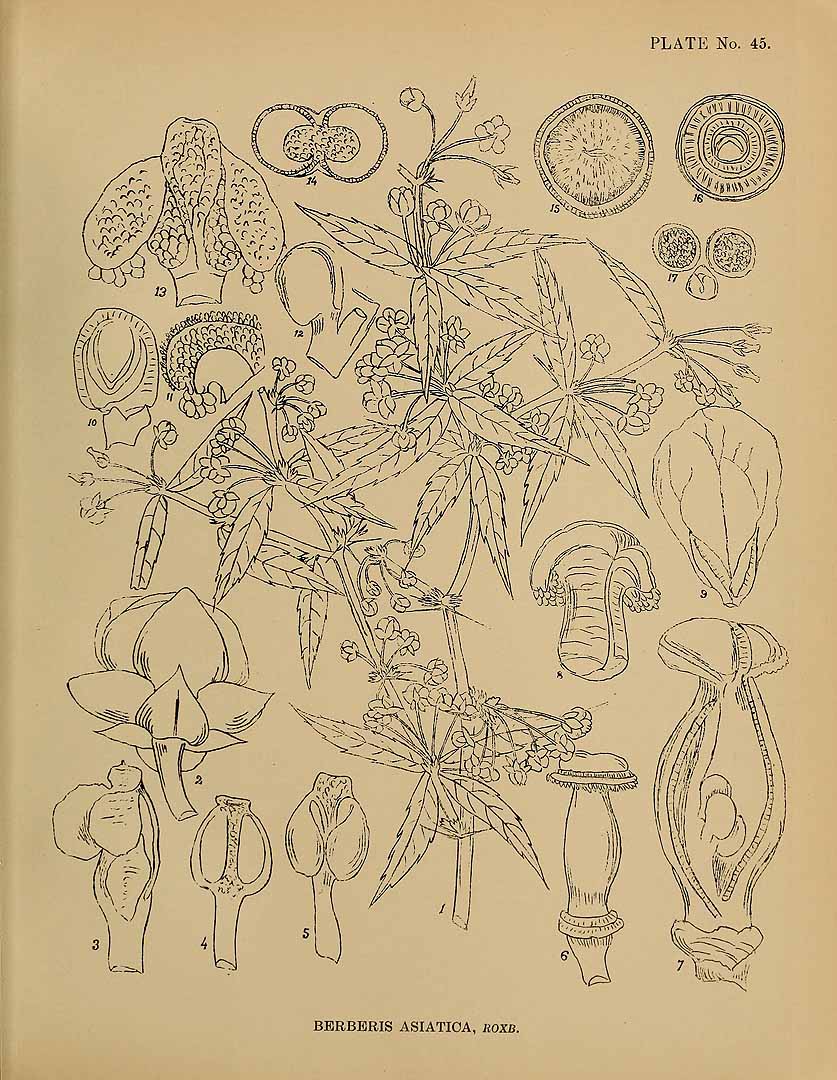! Nouveau site ici !
Vita > Plantae > Magnoliophyta > Magnoliopsida > Ranunculales >
Berberidaceae > Berberis
Berberis asiatica

 | **** - ***
| **** - ***
Vita > Plantae > Magnoliophyta > Magnoliopsida > Ranunculales >
Berberidaceae > Berberis
Berberis asiatica

Un arbuste épineux. Il pousse environ 3 m de haut. Les feuilles ont des tiges courtes et se présentent en grappes. Les feuilles mesurent 1,5 à 9 cm de long sur 0,5 à 2 cm de large. Ils sont ovales et coriac... (traduction automatique)
→suite
⬀
Le  donne accès au menu
donne accès au menu (c'est votre point de repère) 😊 ;
En dessous vous avez la classification, à partir de la vie (Vita, premier rang) jusqu'à la classe au dessus de la plante, dont vous trouvez ensuite le nom scientifique/botanique (latin) puis le nom commun (français), le cas échéant ;
C'est aussi un lien vers la fiche complète (tout comme la ✖, en bas à droite, et le +, en dessous de la description) ;
Vient alors l'illustration (ou ce qui la remplace, en attendant), la comestibilité :
Et en bas
⬂



